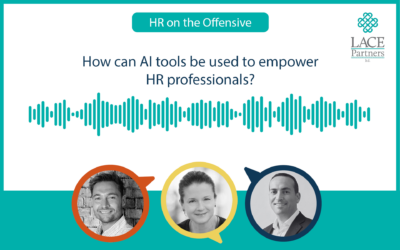Earlier in October we ran our first Transformation Directors forum, which brought together a collective of HR professionals from a variety of industries to discuss some of the most pressing questions they have across the different businesses they work in. Sian Beacham, our Client Executive Director is heading up this forum and has summarised the discussions and key takeaways below:
What is Transformation now?
On a slightly existential note, we talked about ‘transformation’ generally and the fact it is increasingly being over-used and thus has a ‘jading’ effect. People are tired of going through more ‘big style’ change and sometimes see it as ‘change for change’s sake’. We discussed the fact it’s used as an all-encompassing term for so many things and as a result does it really have a start or an end anymore? We concluded that a few ways that a ‘Capital T Transformation’ differs from a project of change are its use as a prioritisation mechanism, the mandatory need for a value case (and it is a value case not a business or investment case these days), the need and the application of formal stage gates for decision making.
Aha! Should we consider reframing and talk about evolution vs transformation and does this have a more positive emotional impact?
Hybrid / Remote working - how does it impact Transformation?
As per our ‘One Big Thing’ research, hybrid / remote working remains top of the list of issues that we are all dealing with now. We had some great discussion about both the challenges and benefits that it brings, and it was interesting to hear about the different approaches organisations are taking to try and get the balance right.
For the majority this involved a return to the office two or three days a week, but there was some discussion around whether this should be mandatory or ‘strongly encouraged’; with the overarching approach depending on the workforce make-up (i.e. the proportion of those who cannot work from home and the fairness across all workers). The conclusion seemed to be that encouraging attendance was the best approach BUT there needs to be a ‘purpose’ linked to it. Employees need to feel and get some value or benefit to really make it appealing and make it stick. For some of the group that meant rotation of business functions in on each day, or potentially offering incentives (often food or social based!) to encourage people back.
We also talked about how different it is managing programmes of work in a hybrid way. The risks articulated included that some relationships are ‘skin deep’ vs the ‘always being on a plane’ and less productivity than pre Covid times. There was the concern that it is harder to ‘call in favours’ and we need to change our style and content in order to mitigate this relationship strength risk. We also concluded that some meetings or sessions only really work face-to-face. Good examples are meetings with senior stakeholders, so you could look them in the eye (and make sure they weren’t distracted!) and training sessions where people need to absorb a lot of information and you need to validate this is happening.
Aha! Where crucial meetings or sessions have to be remote, there needs to be clear expectation management on what is needed from the session and governance and structure at the forefront in the form of stage gates and clear sign off / decision points so people really know what they are agreeing to (including a ‘camera on’ policy even!).
Employee Experience – how do we get the balance right?
We had a great discussion around the fact that employee experience is important (we even have an entirely separate forum for it!) – but at what cost? There needs to be a balance between employee experience vs standardisation, and it is critical to get the basic foundations sorted first. Build the foundations and then add the experience layer on top and in doing it this way, you can manage expectations on what is achievable because if, for example, the data isn’t clean / structured the change won’t be possible or land. One of the other key and common challenges we had all faced was over-selling the experience that will be delivered (‘consumer-grade’ often used!!).
It was acknowledged how employee experience is hard to get right for everyone. Everyone has different needs and preferences, and people use systems differently, bringing in the discussion about workforce segmentation (and personas). We also talked about how it’s more important to focus on experience for some systems, so for example, CRM systems versus less so for a payroll or HRIS system which employees MUST use.
Aha! The growing question seems to be around employee experience vs personalisation which means we need to be very clear on the approach and depth of personas when doing design work. This can set unrealistic expectations.
Data and Analytics
Our discussion focused on how analytics works best when it is using cross functional data (e.g. finance, sales, operational productivity). HR and the people data is a small component of the analytics needed to inform business decisions. Attendees also all agreed that we not only need to help people understand data but they need to be able to ask the right questions and tell a story from the data in front of them. It is critical that we push towards HR providing analytics and insights, not just reporting. To be able to do this we agreed that there is a lack of capability in HR around analytics and that this needed to be addressed and that data relevance was critical to buy in.
Aha! If senior leaders modelled good behaviour by asking the right questions / hypotheses AND demonstrate that they actually use the data and analytics to drive decision making it will naturally push up the want and need to mature these areas.
War for Talent and employee value proposition (EVP)
These were the other main themes from our ‘One Big Thing’ research and led us into a conversation about talent acquisition. The first area we discussed was around talent acquisition being too internally focused. Have we lost the focus on the internal talent marketplace? And do we assume we have to go externally first (or in parallel) before validating our employees ‘whole lives’ not just their current employer life?
‘Talents cards’ and knowledge of our employee’s skills (both what companies need and what they have) are lacking. There is an overarching lack of internal skills recognition with most being more dependent on the world of LinkedIn! We also talked about the importance of an EVP in external recruitment and how having one isn’t enough if you cannot follow-through once you are in employ. A lot of employees are buying into an EVP but feeling very let down as they arrive in the organisation which poses a real risk of talent ‘bounce’ and increased overall attrition.
Aha! There is still a huge disconnect between the EVP promise and how the promise NEEDs to translate for employees once they land in an organisation (and how that WILL differ across different functions).
If you’d like to find out more about the transformation forum, or how LACE could support you on your journey, reach out to us here.






